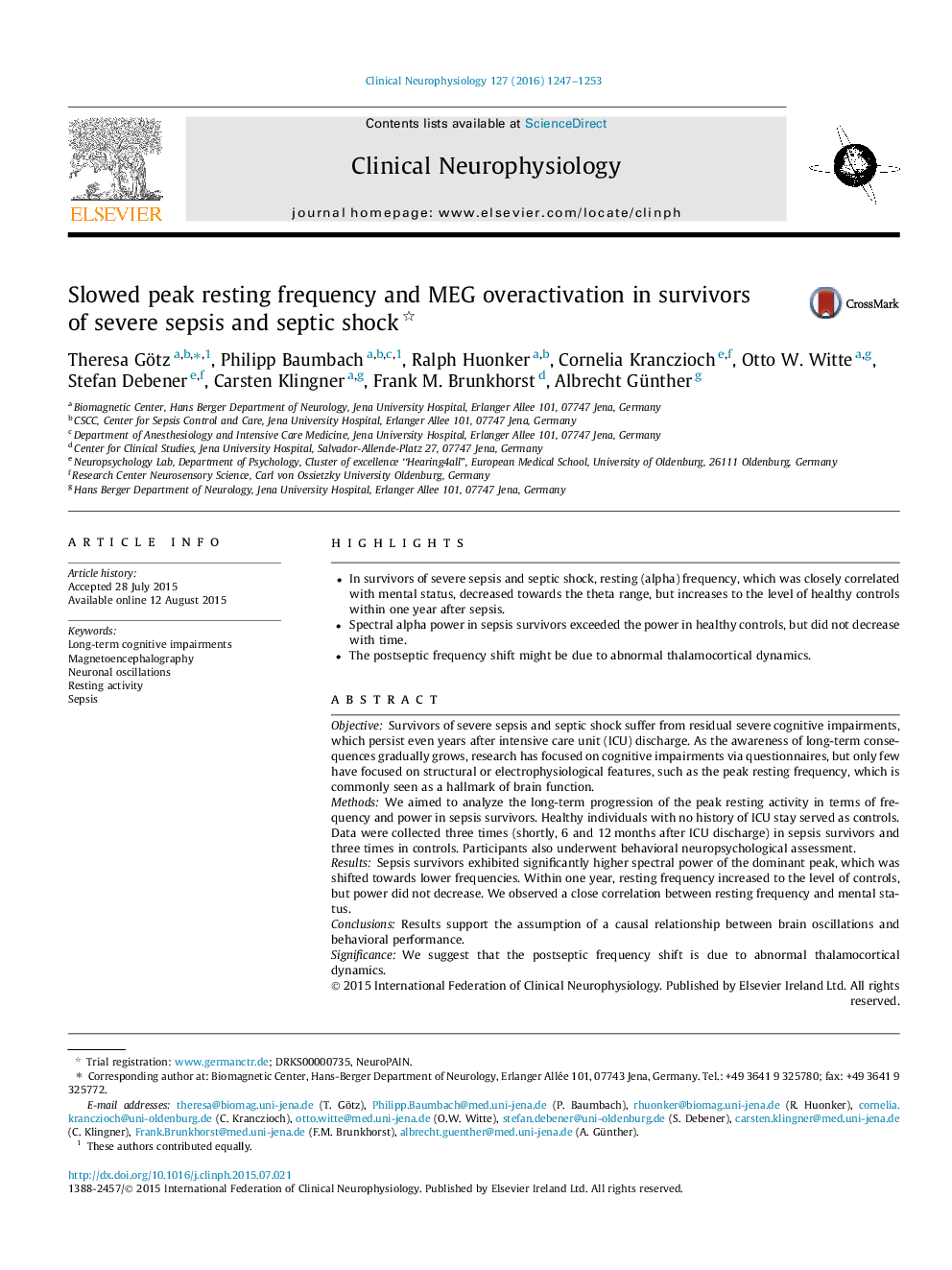| Article ID | Journal | Published Year | Pages | File Type |
|---|---|---|---|---|
| 6007562 | Clinical Neurophysiology | 2016 | 7 Pages |
â¢In survivors of severe sepsis and septic shock, resting (alpha) frequency, which was closely correlated with mental status, decreased towards the theta range, but increases to the level of healthy controls within one year after sepsis.â¢Spectral alpha power in sepsis survivors exceeded the power in healthy controls, but did not decrease with time.â¢The postseptic frequency shift might be due to abnormal thalamocortical dynamics.
ObjectiveSurvivors of severe sepsis and septic shock suffer from residual severe cognitive impairments, which persist even years after intensive care unit (ICU) discharge. As the awareness of long-term consequences gradually grows, research has focused on cognitive impairments via questionnaires, but only few have focused on structural or electrophysiological features, such as the peak resting frequency, which is commonly seen as a hallmark of brain function.MethodsWe aimed to analyze the long-term progression of the peak resting activity in terms of frequency and power in sepsis survivors. Healthy individuals with no history of ICU stay served as controls. Data were collected three times (shortly, 6 and 12Â months after ICU discharge) in sepsis survivors and three times in controls. Participants also underwent behavioral neuropsychological assessment.ResultsSepsis survivors exhibited significantly higher spectral power of the dominant peak, which was shifted towards lower frequencies. Within one year, resting frequency increased to the level of controls, but power did not decrease. We observed a close correlation between resting frequency and mental status.ConclusionsResults support the assumption of a causal relationship between brain oscillations and behavioral performance.SignificanceWe suggest that the postseptic frequency shift is due to abnormal thalamocortical dynamics.
